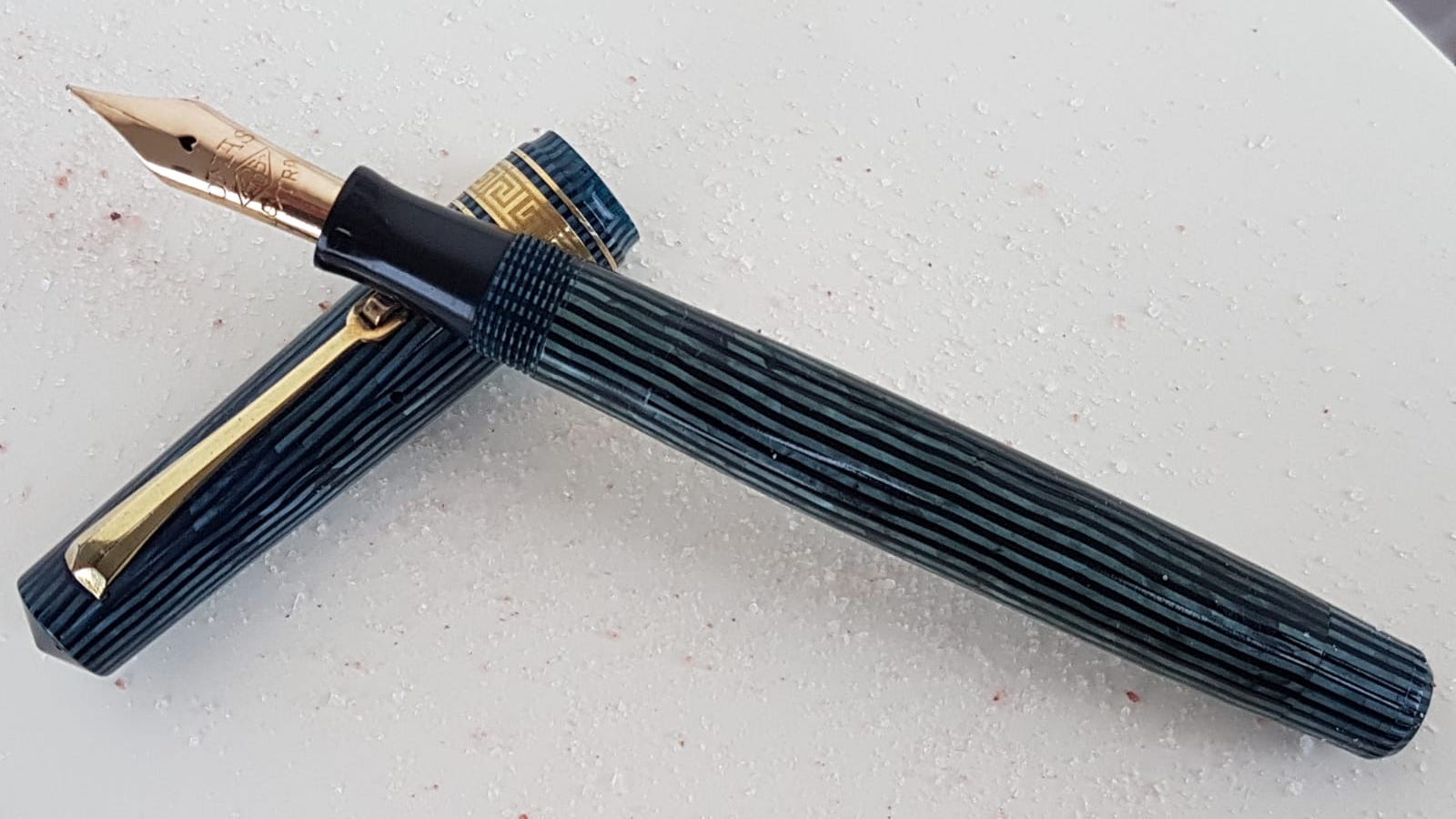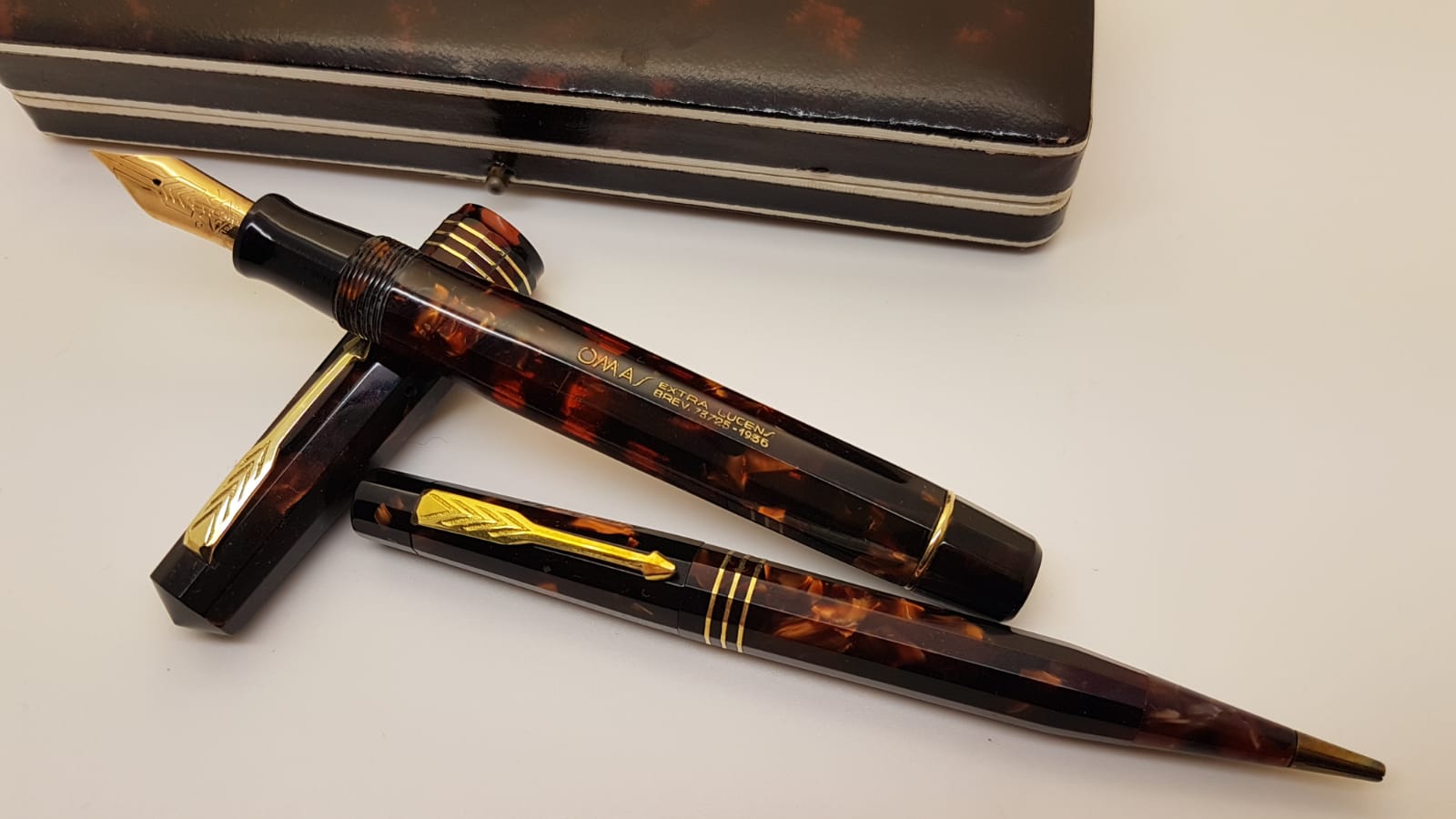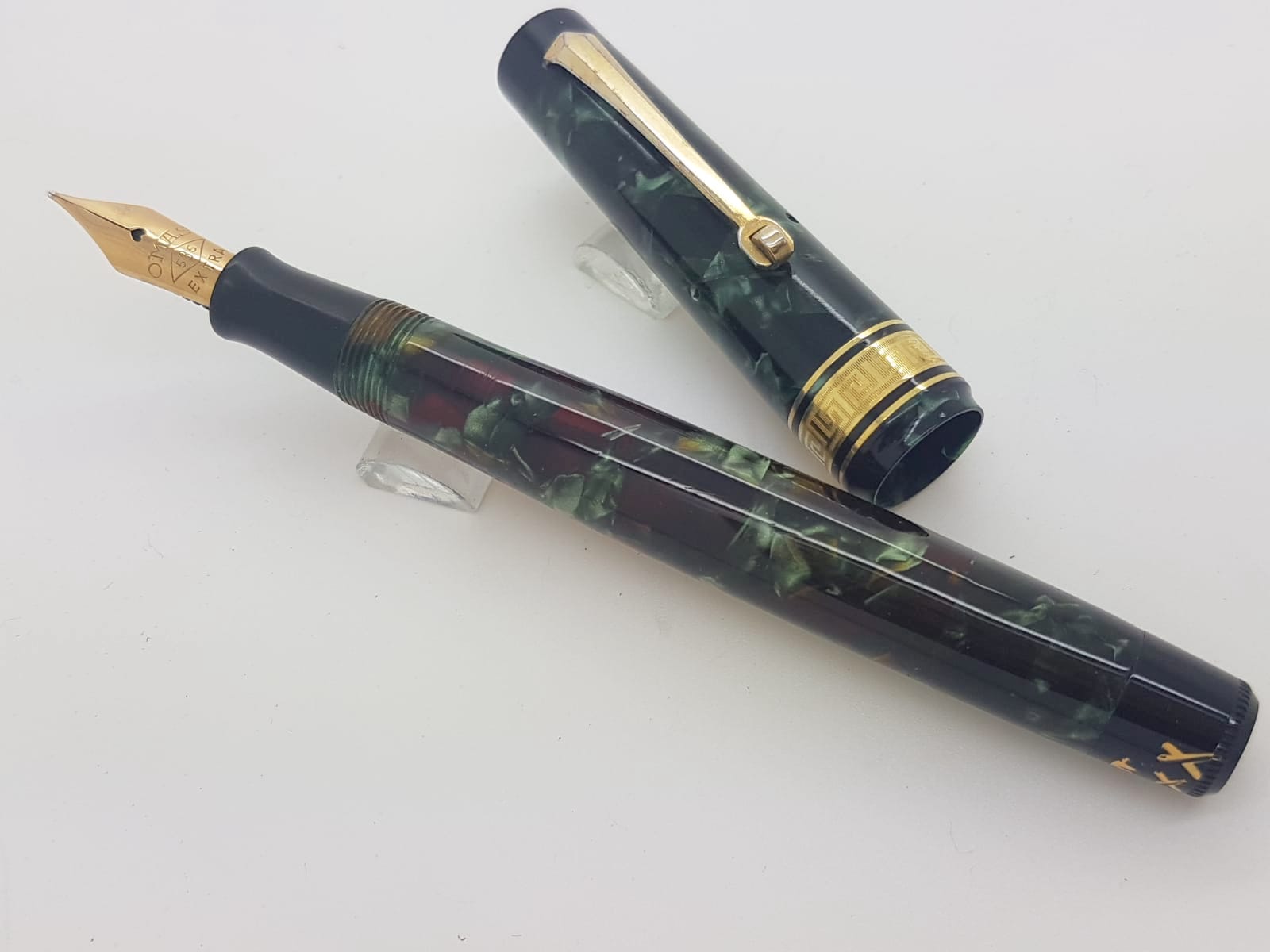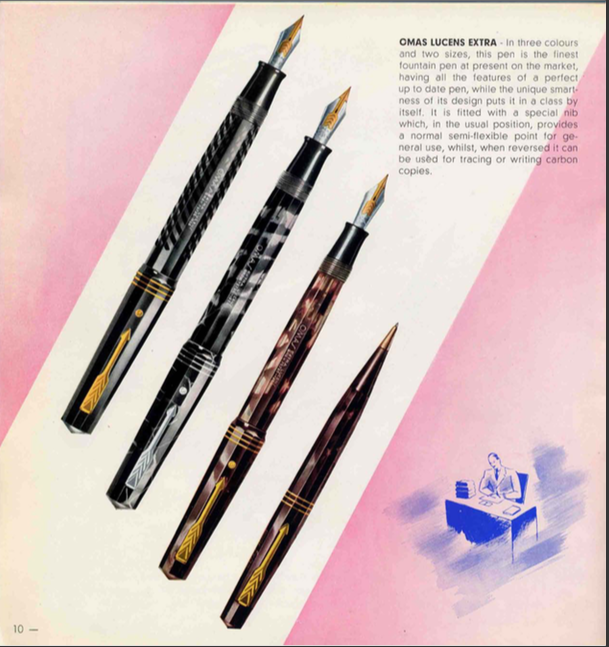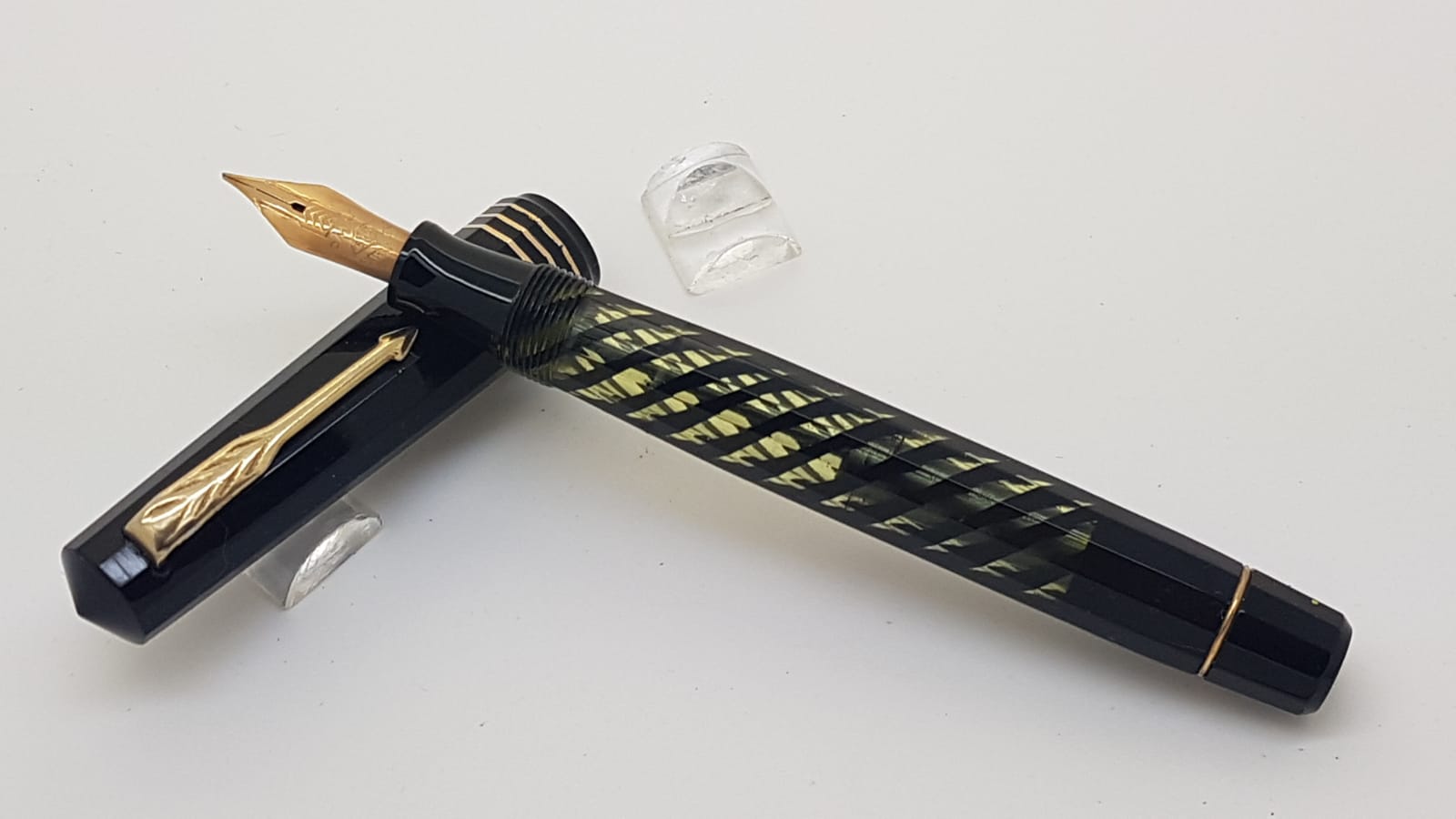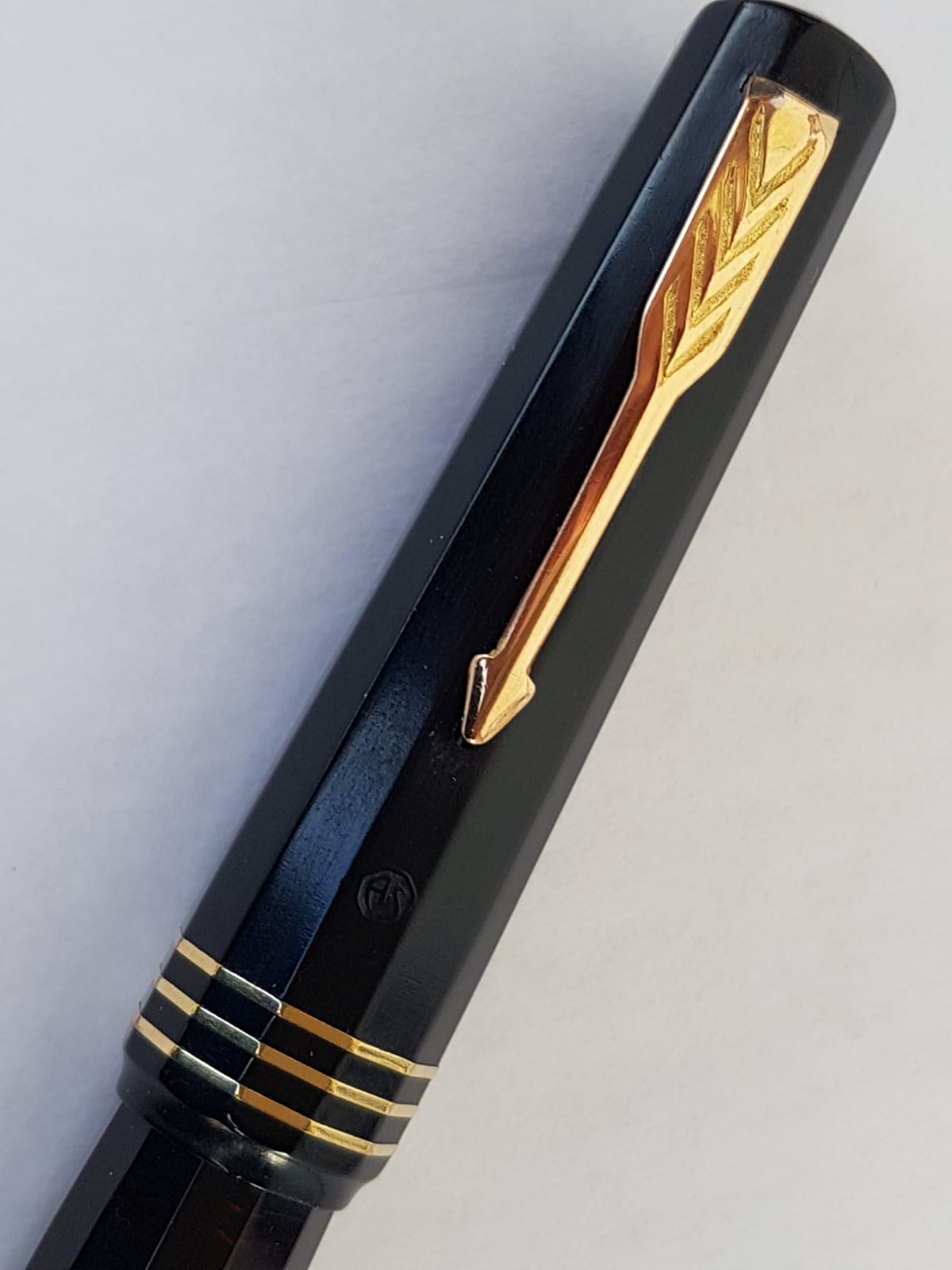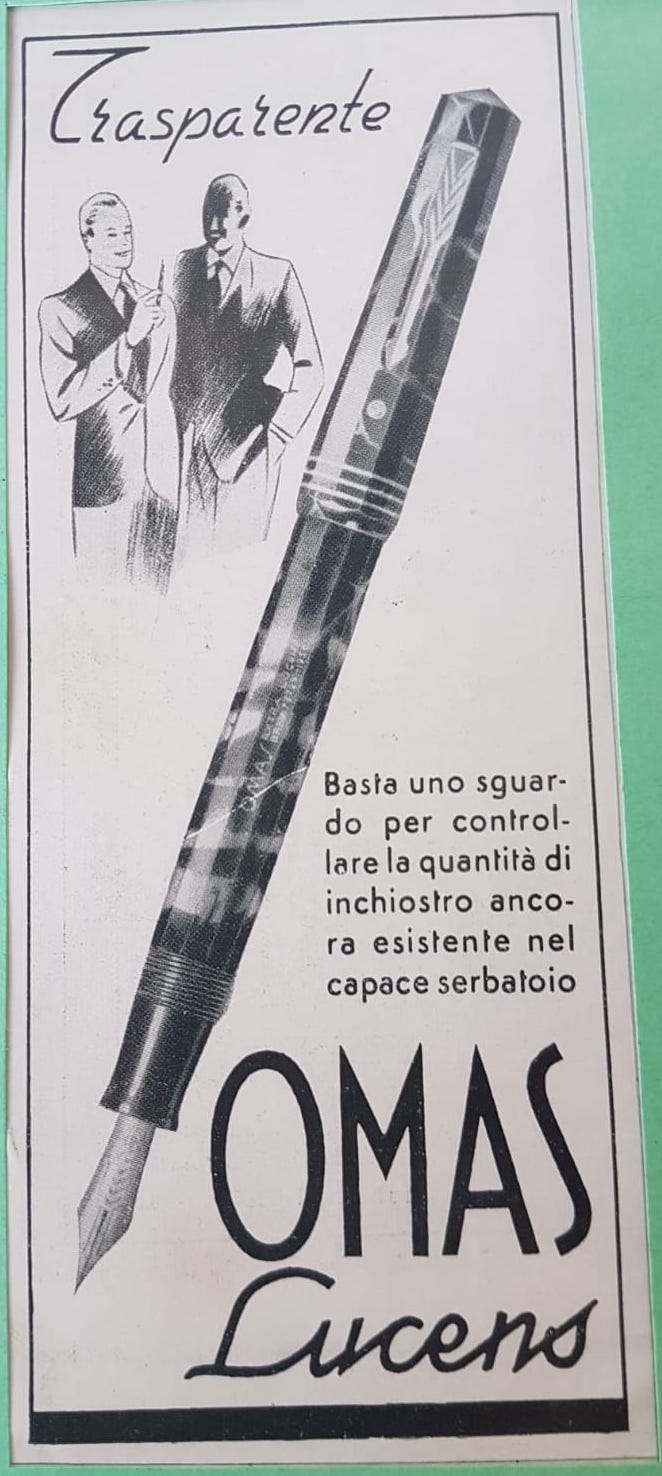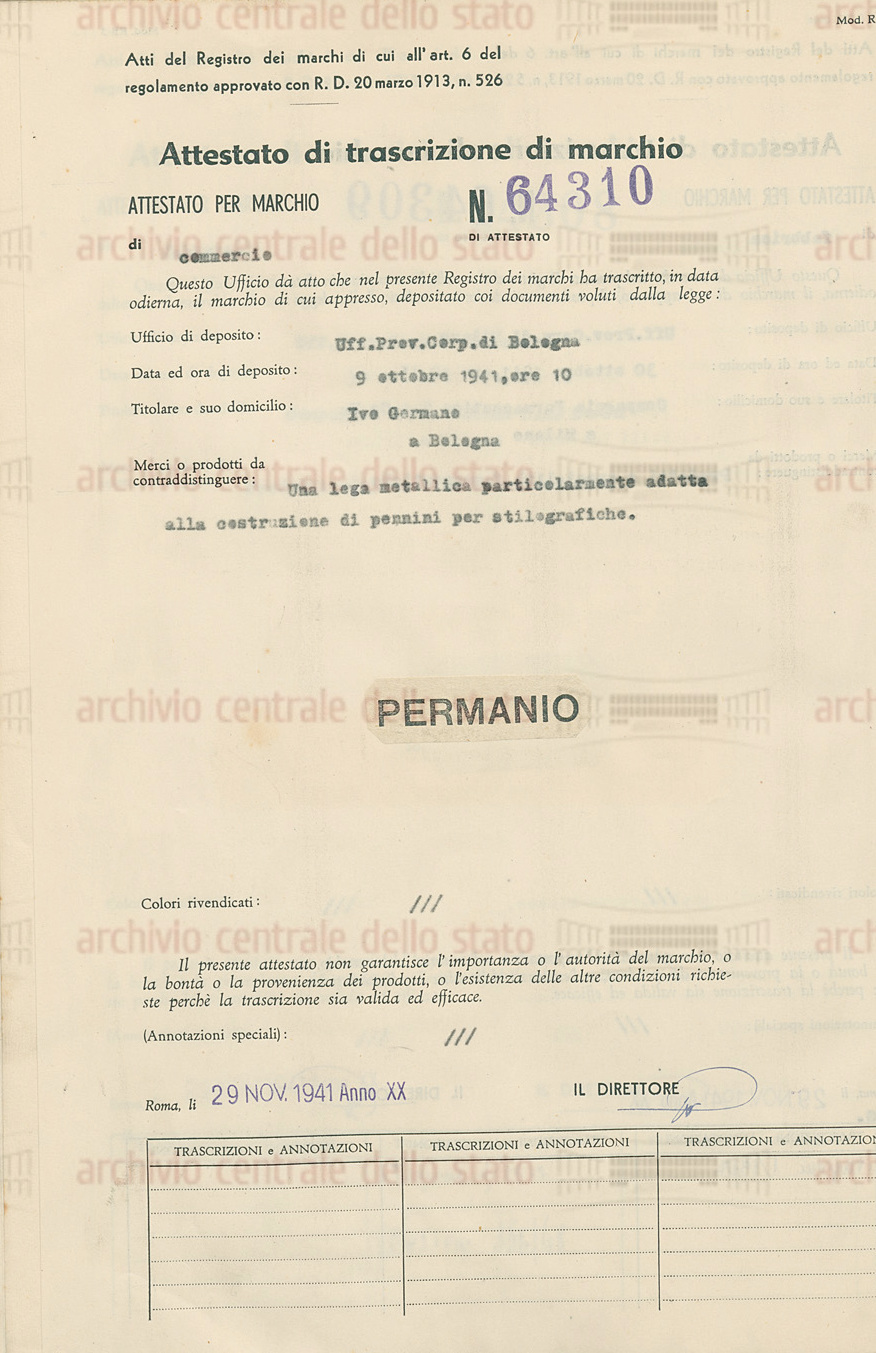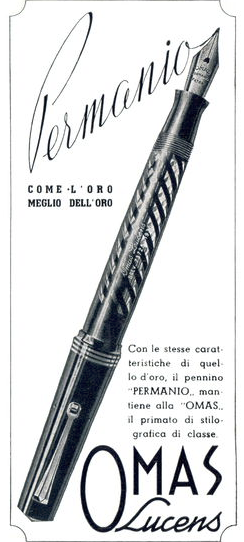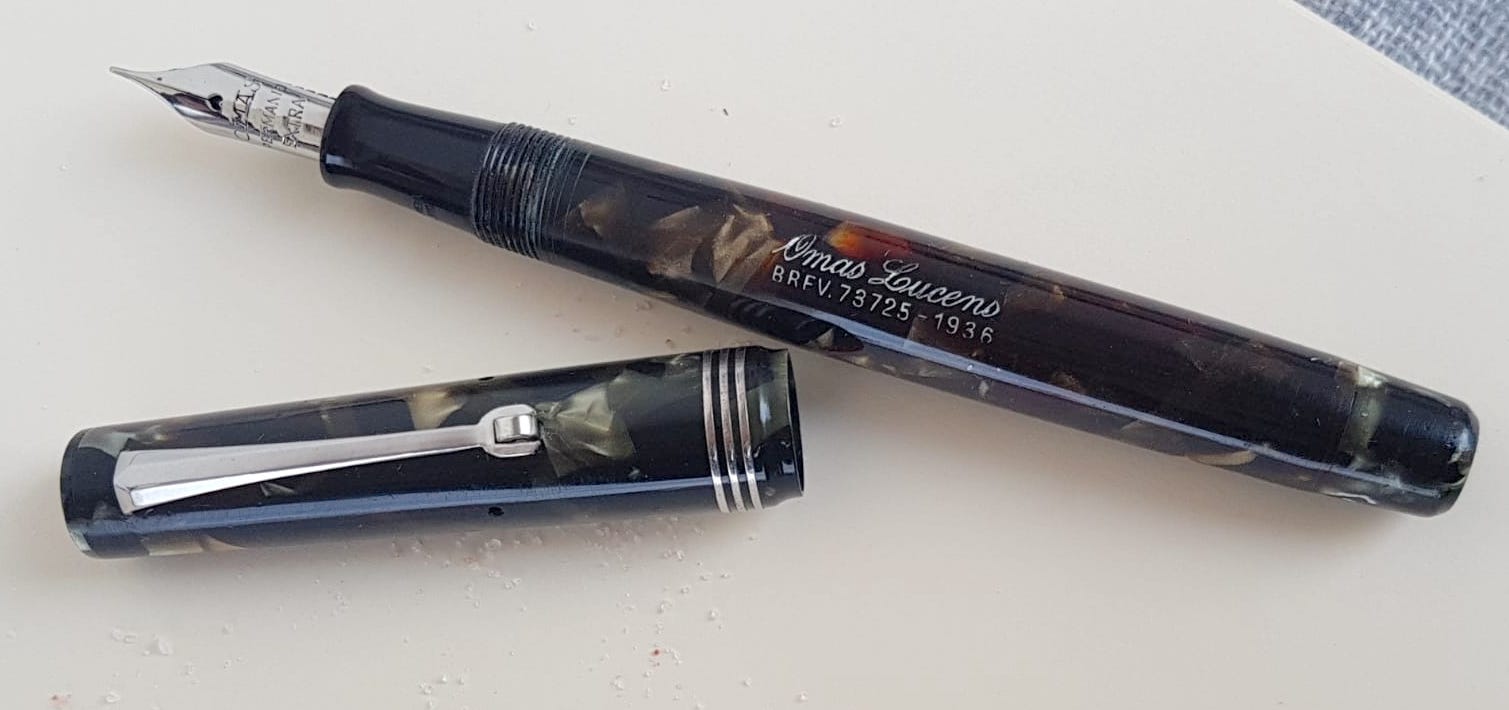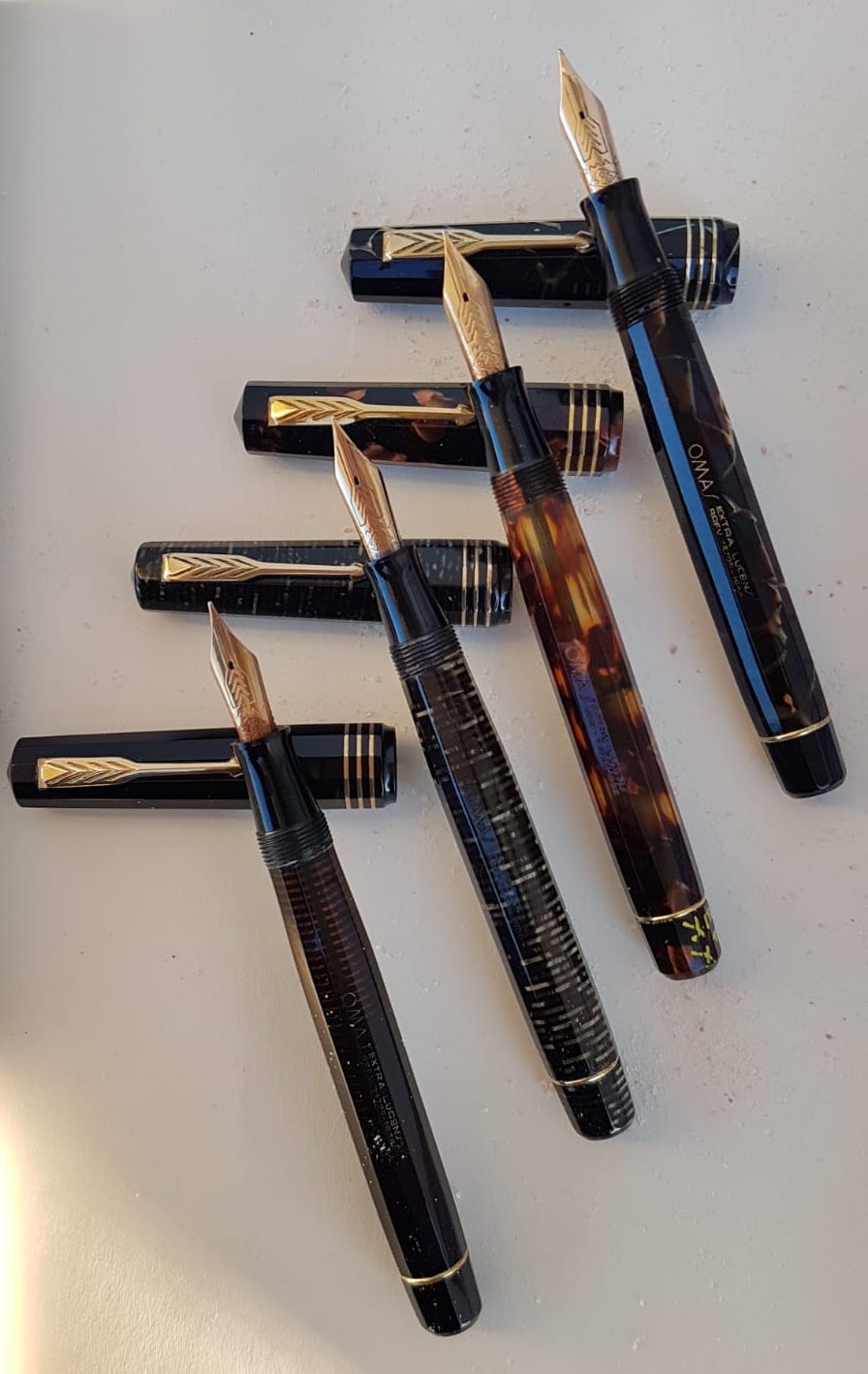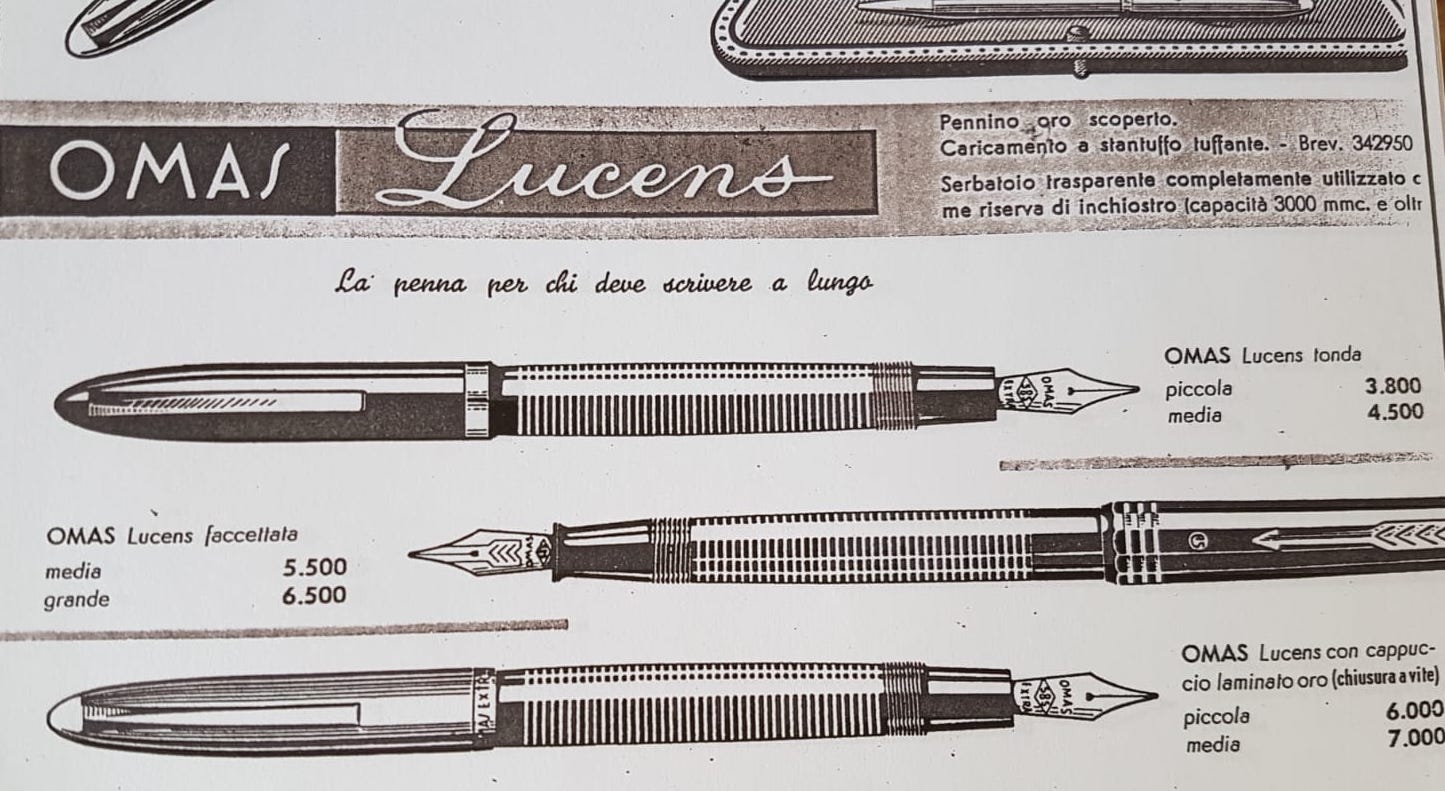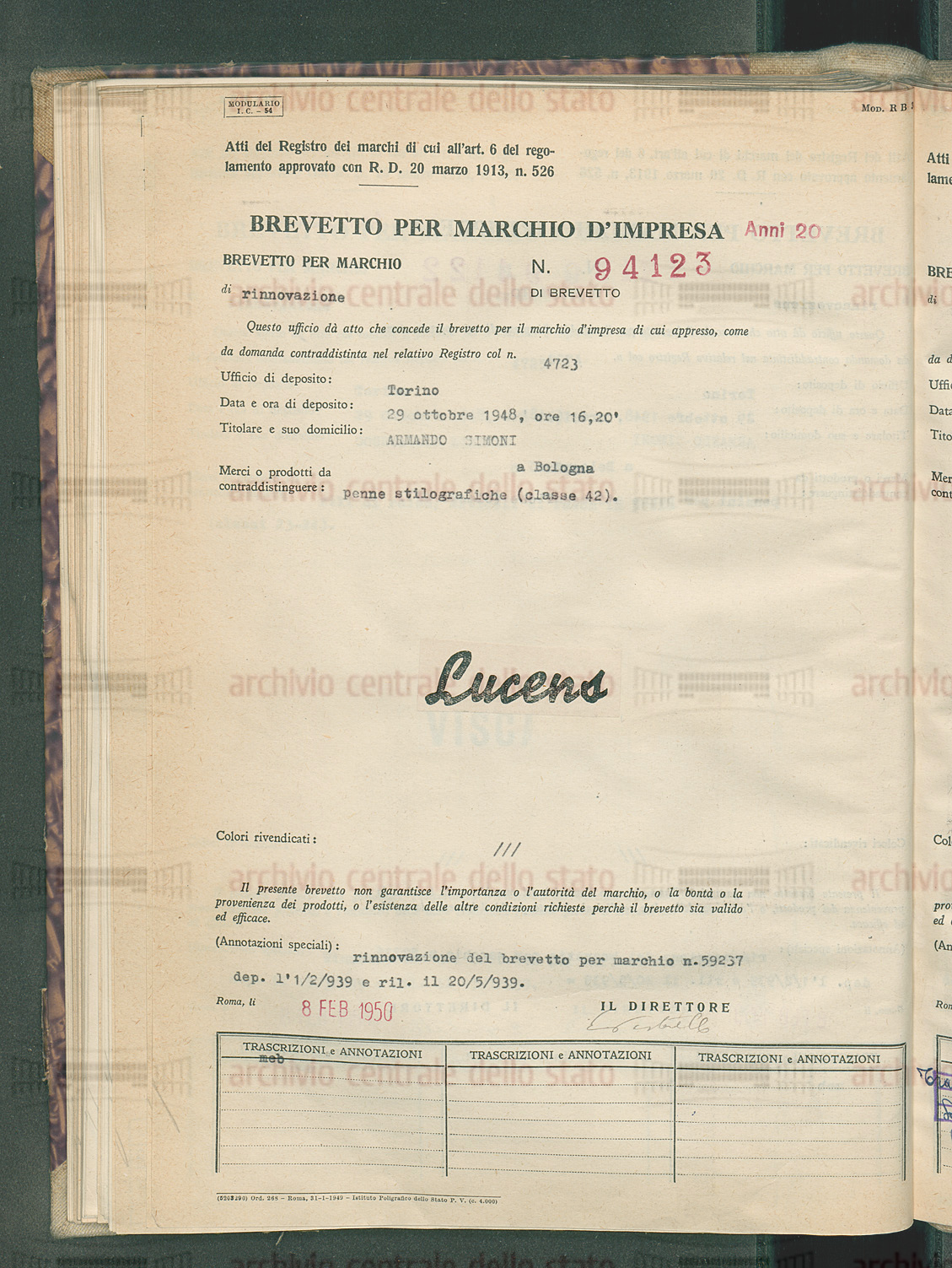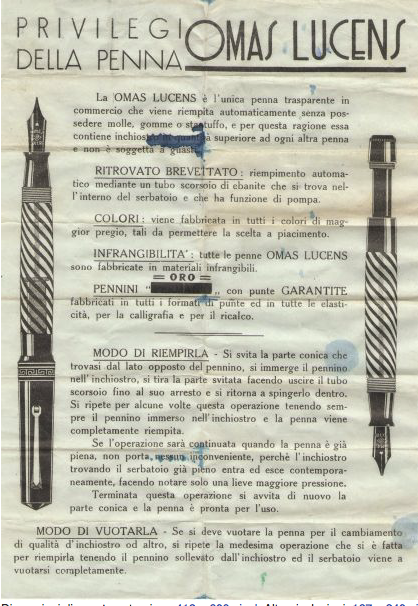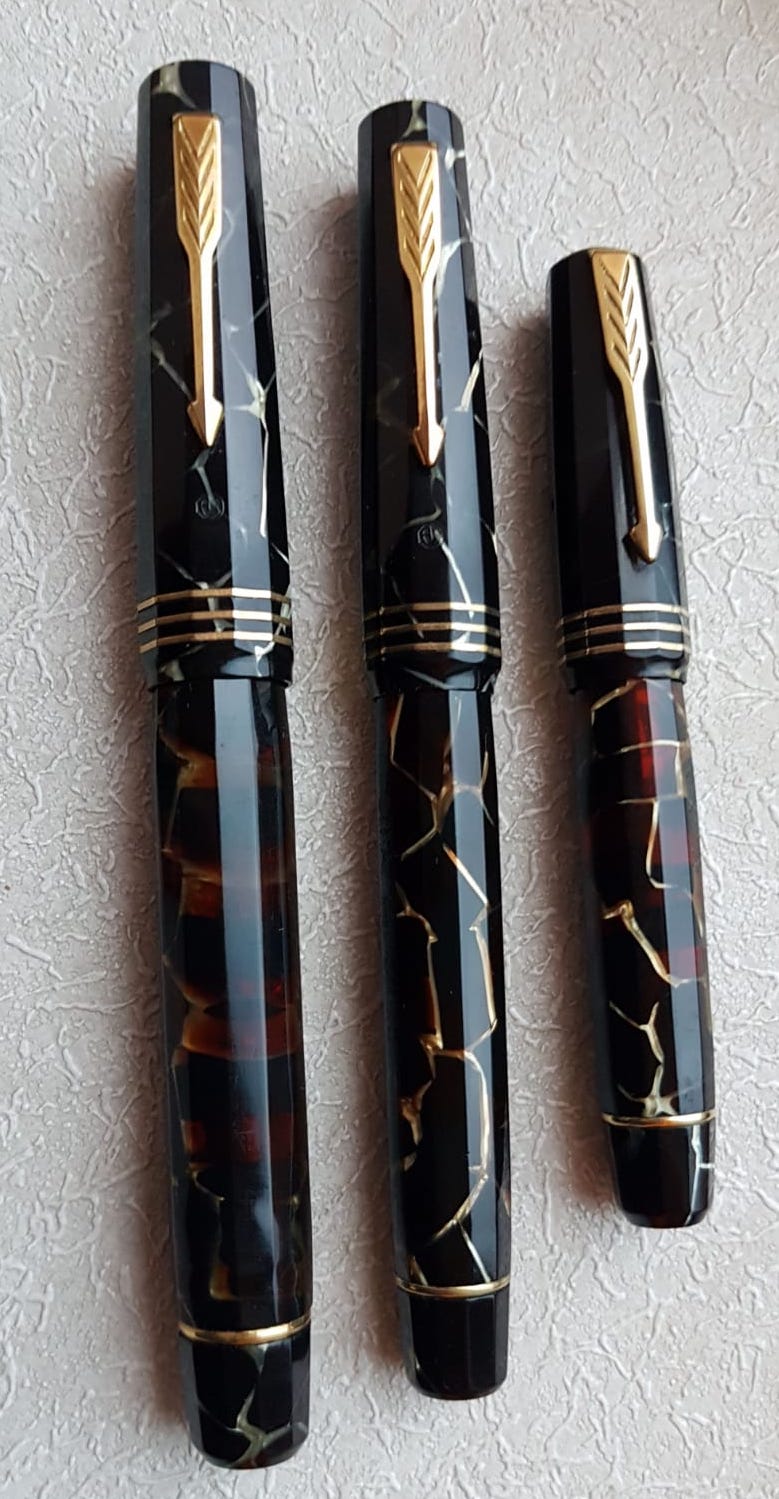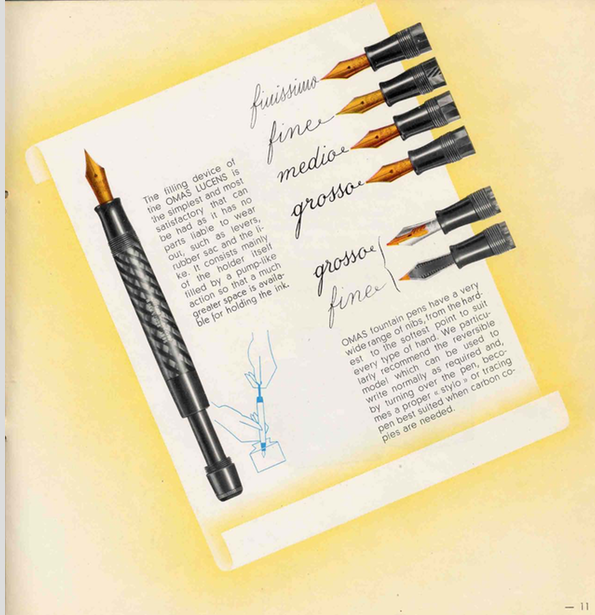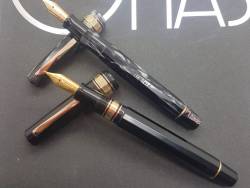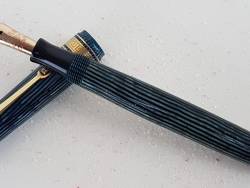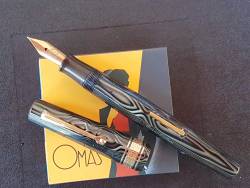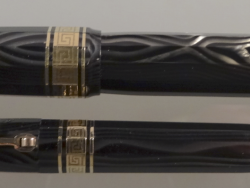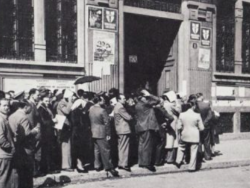Omas Lucens and Extra Lucens
This article was written for a seminar on Italian pens I held at the Pen show in Washington D.C., Aug. 2019
In 1936, when Omas introduced the Lucens model, the market already offered a number of models with transparent barrel and ink visibility.
The first company to explore this new technology had been Pelikan. As early as 1929, Pelikan had in fact introduced the 100 model, a piston filler with transparent window which allowed for great ink capacity and ink visibility.
Following Pelikan’s example, other companies had patented mechanisms which finally set pens free from levers or buttons. In the USA Parker had introduced the Vacumatic in the early 1930s, soon followed by other big companies like Conklin and Wahl. In the UK, the Visofil model by Mabie Todd was introduced in 1934 and finally, Montblanc had adopted the telescopic piston in 1934.
So, Omas was perfectly in line with the general international trend towards transparent pens with large ink capacity.
Early Lucens models had a black cap top and a black turning knob. Soon this feature was however abandoned in favor of single piece caps and turning knob in the same color as the barrel. Early Lucens with this features are much less common than standard ones as they were produced for a very short span of time.
The range of colors was wider in reality than what the catalogues of the time illustrate. Collections have shown that a line of Lucens pens in at least two sizes ( senior and medium) was manufactured in blue striped celluloid ( same celluloid as the one used for the Minerva Classica) both with black cap top and black turning knob and with single piece caps and matching turning knob. It is not unlikely that in the years to come, new colors may be discovered.
Black Lucens pens deserve a special notice as their barrels can have spiralled, longitudinal, horizontal lines which make their look very unusual, especially thanks to the very light transparency of the barrels.
The Lucens was not meant to remain on its own and the line was soon flanked by the Lucens Extra, later known as Extra Lucens.
This line of pens with facetted design had the same aesthetic features as the Lucens: transparent barrel, greek key cap band and roller clip. Meant to be the top of the range, the Lucens Extra was fitted with a two tone nib ( very similar to Parker’s Vacumatic nib) with the outline of an arrow. It was initially produced only in the medium size.
During WWII both Lucens and Extra Lucens were restyled due to war economy. The use of gold was limited by the government and Omas had to abandon its beautiful gold nibs and gold filled trims. Wartime Lucens and Extra Lucens have chrome cap trim and were fitted with “Permanio” nibs.
Permanio was an alloy Omas patented in 1941, which was advertized “as good as gold”. It was not true, obviously, as Permanio nibs were often corroded by ink acidity and could not offer the same pleasant flexibility as gold nibs.
With the introduction of the more modern torpedo-shaped models, Omas completely transformed the Lucens line: the traditional design was abandoned in favor of a new tapered look, called “ogiva”. The new Lucens ogiva was produced in three sizes (catalogues show only two) with yellow or red transparency of the barrel in a very limited range of colors: black, laminated gray, laminated green and with gold filled cap.
Credits:
Ramon Gonzales, Jack Leone, Jor Lin, Mario Pinelli
Images from personal archive.

